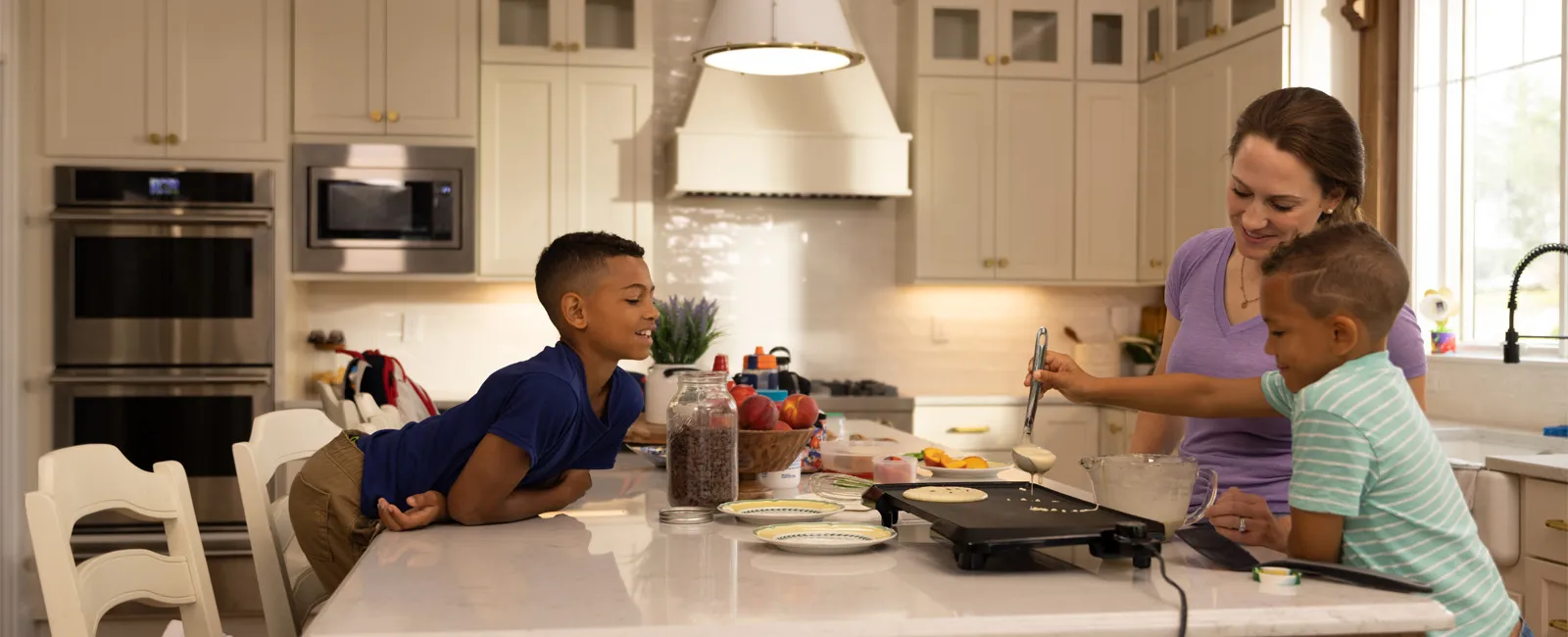
Showers and tubs are super home workhorses, regularly—often daily—bathing the bodies of multiple inhabitants and pets too! To ensure that ritual bathing is both pleasant and effective, showers and tubs need regular, rigorous cleaning. What’s more, cleaning tub and tile both frequently and consistently makes the job easier, less time consuming, and allows you to use the mildest possible cleaning chemicals and tools. Proper tub and tile TLC actually includes four distinct processes, so let’s break it down:
- Smooth surfaces (tub, tile, walls, shower doors). For smooth tub and tile surfaces, the number one problem is soap scum, which is a chemically-bonded amalgamation of biological residues (oils, dead skin cells, etc), bath-product residues (soaps, body washes, scrubs, shaving cream, shampoo, conditioner), chemical cleaning-product residues, and minerals occurring naturally in ground water. If you live a region with high mineral content (hard) water, your risk of developing soap scum will be above average. Excessive heat and steam from bathing and/or less frequent tub and tile cleaning will also contribute to tougher, more stubborn soap scum.
The best defense against soap scum is frequent (at least weekly) cleaning of all tub and tile smooth surfaces. Before selecting specific cleaners and scrubbing tools, be sure to understand what types of materials compose your tub and tile, and check out this post on cleaning different sink types, which also addresses most common tub and tile types. When cleaning at least weekly, douse all smooth surfaces with a high-quality, all-purpose cleaner upon entering a bathroom to clean; allow the solution to sit for around 10 or so minutes while you clean other parts of the room. After sufficient soaking time, a light scrub followed by a thorough rinse should suffice to keep your tub and tile soap-scum free. For more hardened, complex soap scums, you might need to escalate to a specialized solution that has been specifically formulated to bust those chemical bonds. And, contrary to what you might hear from online DIYers, white vinegar won’t typically do the trick.
- Grouts/sealers. Newer tub and tile setups often simulate grout, meaning you can treat clean the grooves just as you would smooth surfaces. But for older setups with real grout, you need an entirely different cleaning process. Grout is porous, which makes it particularly susceptible to mold, mildew, and staining. Once again, consistent, fairly frequent cleaning is your best defense for keeping grout looking its best.
Where stains and other problems develop, follow universal rules for addressing all stains and start with the least aggressive option, escalating to the first thing that works to remove the stain. For grout, begin with a paste of baking soda and water or baking soda mixed with a bit of dishwashing soap. Paint the paste onto the grout and let it sit for up to several hours; then scrub gently but firmly with a grout brush (a tooth or similar brush will work also). If the baking soda paste does not succeed, escalate to hydrogen peroxide, then to bleach or a specialized mold/mildew solution (which is primarily bleach anyway). If using the latter, be sure to ventilate the room well.
- Fixtures. Unsightly limescale and other mineral deposits from ground water are common problems for taps, faucets, shower heads, metal stability bars/handles, and other fixtures found in bathing areas. The good news: limescale is easily removed using a 3:1 water-to-white vinegar solution. You can also use the same descaling solutions you might have around for removing mineral deposits from dishwashers, coffee makers, and so forth. The bad news is that, if you’re seeing excessive limescale buildup on bathroom fixtures (or it returns fairly quickly after cleaning), you likely have the same problem happening inside your pipes and water heater and may want to investigate solutions for systematically softening your home’s water supply.
In addition to developing exterior limescale deposits, research shows that shower heads can harbor pathogens that typically cause lung and other respiratory infections, meaning you need more than just vinegar and water to clean effectively. If a shower head can be easily removed, soak periodically first in a proper disinfecting solution, then use vinegar and water to remove limescale deposits. If the fixture cannot be easily removed, add your cleaning solutions to a plastic bag and use a sturdy rubber band or zip tie to secure over the shower head, ensuring it is fully submerged for several hours.
- Drain. While weekly drain cleaning might be overkill, the oft-neglected fixture does need occasional TLC to address odors and buildup of hair and other residues that can either clog the drain outright or dramatically slow drainage of dirty bathwater. If water is draining normally, a healthy dose of white vinegar or lemon juice should work well to freshen the drain. For a slow-working drain, skip the vinegar as it’s not typically a strong enough acid to dissolve hair and other buildup. You’ll need either a chemical solvent formulated specifically for hair or, if you prefer to avoid chemicals, a plumber’s snake to physically remove the blockage.

